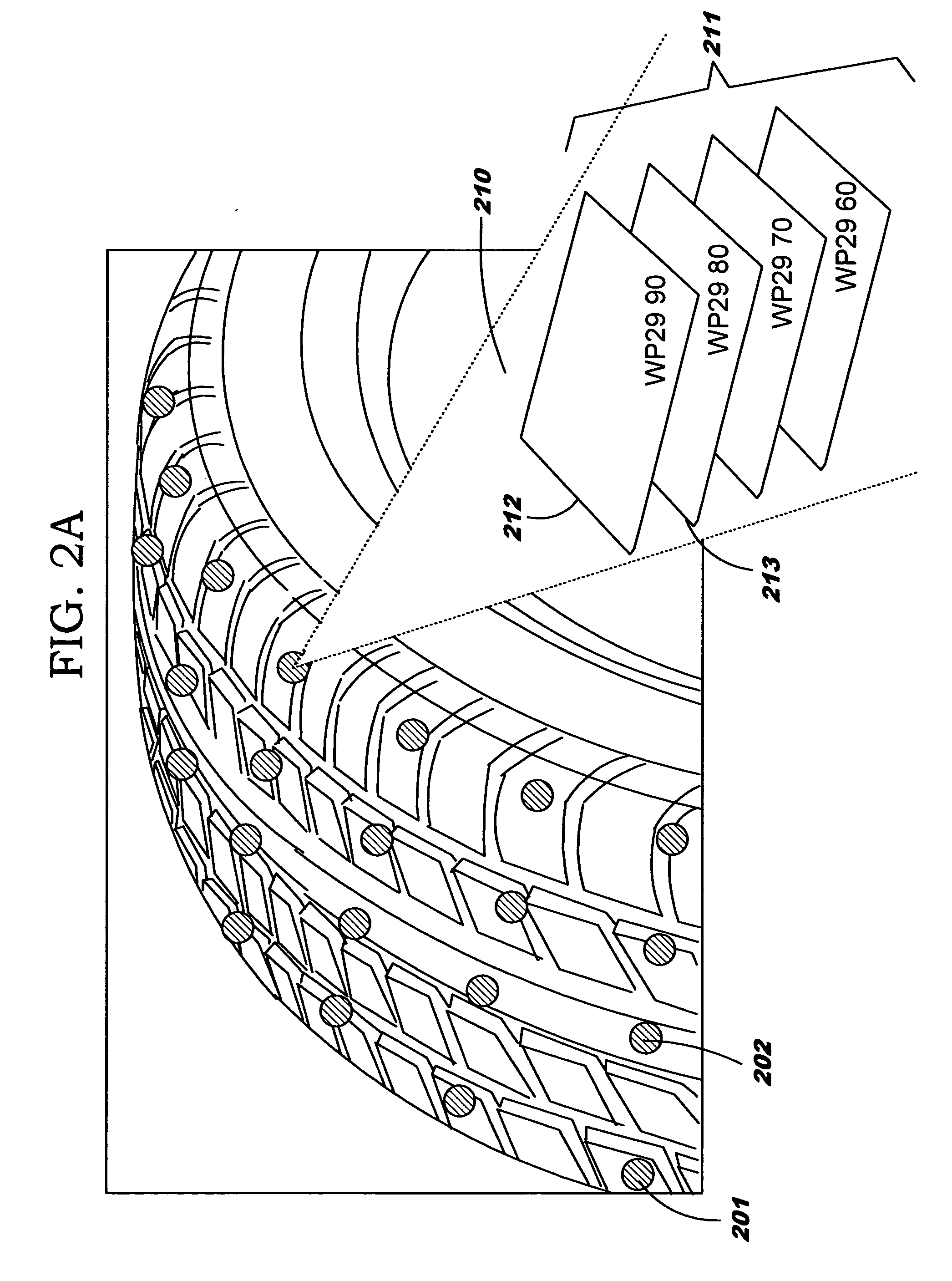Detecting wear through use of information-transmitting devices
a technology of information transmission device and wear detection, which is applied in the direction of brake disc, transportation and packaging, instruments, etc., can solve the problems of inability to scan (i.e., receive a signal from) the device, damage or missing of the information transmission device,
- Summary
- Abstract
- Description
- Claims
- Application Information
AI Technical Summary
Benefits of technology
Problems solved by technology
Method used
Image
Examples
Embodiment Construction
[0019] Embodiments of the present invention enable detecting (referred to herein equivalently as “measuring”) wear of items using information-transmitting tags. For example, the tags may be embedded or otherwise attached to an item; as another example, a tag might be placed in a receptacle of an item. Degree of wear may be measured. Wear patterns may be detected across one or more wear positions. Notifications pertaining to wear may be generated.
[0020] Through use of techniques disclosed herein, the time and skill it takes to routinely inspect items for degree of wear and / or proper wear patterns can be reduced. In addition, knowing when to replace items that wear, thereby improving safety and / or comfort, is facilitated. A wear pattern that does not fall within a threshold of an expected rate might indicate, for example, that the corresponding item is improperly installed or is defective.
[0021] RFID tags can be created using relatively inexpensive manufacturing techniques, and the ...
PUM
 Login to View More
Login to View More Abstract
Description
Claims
Application Information
 Login to View More
Login to View More - R&D
- Intellectual Property
- Life Sciences
- Materials
- Tech Scout
- Unparalleled Data Quality
- Higher Quality Content
- 60% Fewer Hallucinations
Browse by: Latest US Patents, China's latest patents, Technical Efficacy Thesaurus, Application Domain, Technology Topic, Popular Technical Reports.
© 2025 PatSnap. All rights reserved.Legal|Privacy policy|Modern Slavery Act Transparency Statement|Sitemap|About US| Contact US: help@patsnap.com



